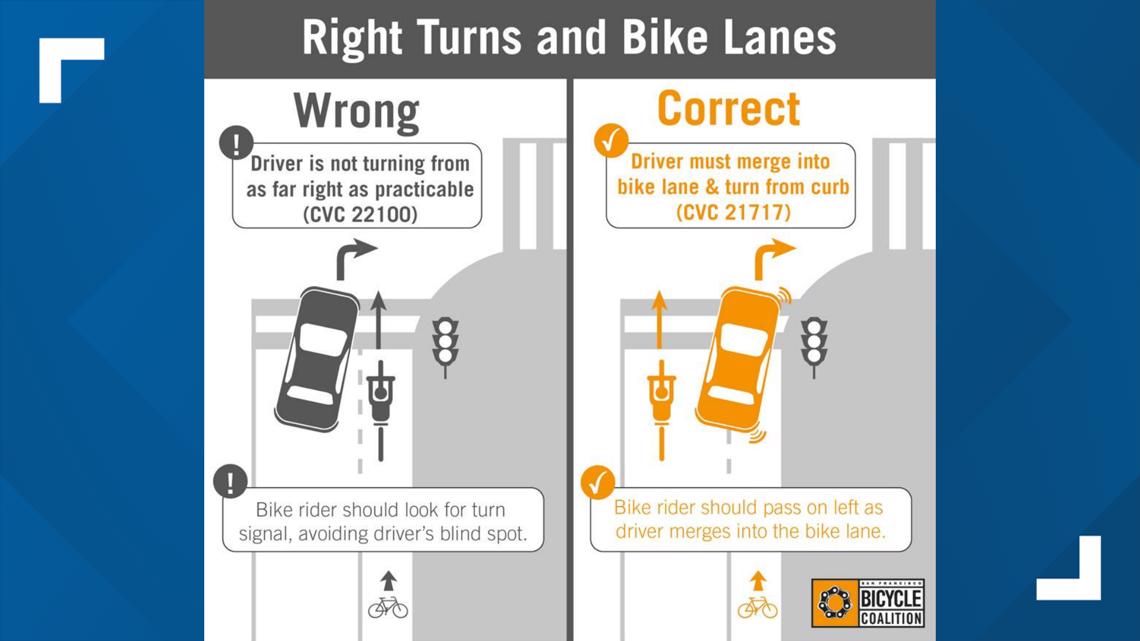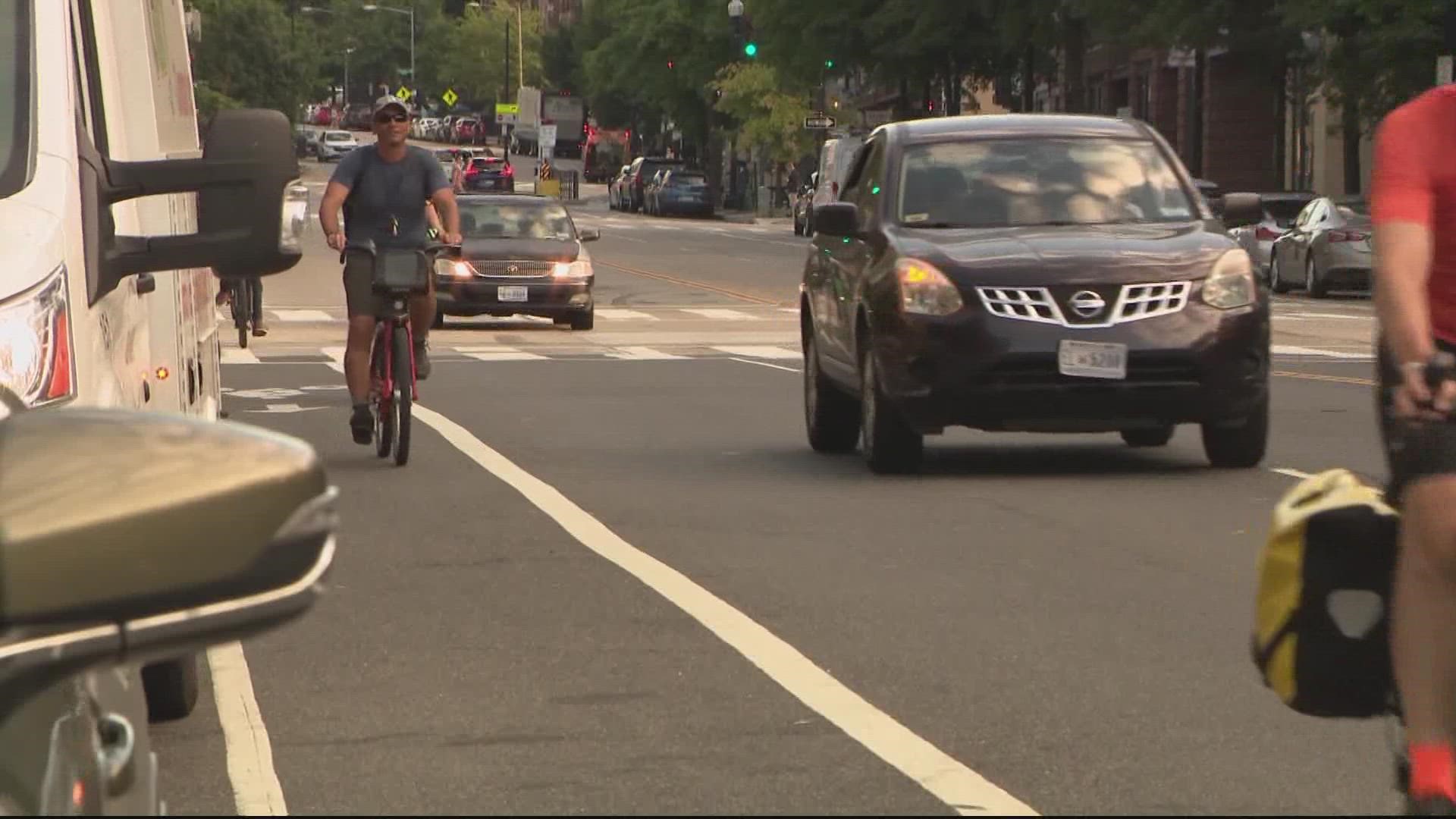WASHINGTON — Heading out for the day–walking, driving, taking transit or cycling–you’ll likely be sharing the road with someone getting around differently than you are.
That’s why it’s important to share the road–and there’s a right way to do that.
THE QUESTION:
How should cars and cyclists handle making right turns in Washington, D.C.?
THE SOURCES:
WHAT WE FOUND:
This graphic shared online generated a bit of conversation, asserting the proper way for a car to turn right adjacent to a bike lane is to move into that bike lane, with the cyclist passing on the left. Cyclists and drivers commented in confusion: is this real? Is this safe?


Turns out: this graphic is from San Francisco.
To verify the rules of D.C. roads, we asked Washington Area Bicyclists Association, and the DC Department of Transportation and its Active Transportation office.
“We are the branch that does most of the development of the bike lane projects,” George Branyan, of DDOT, said.
He confirmed that yes, cars turning right should cross into the bike lane.
“A bike lane is a lane, so you are actually supposed to get into the bike lane briefly, and then execute your right turn,” said Branyan, who also points out that's if the bike lane is a typical unprotected lane, with dashed painted lines, and without protective posts or barriers.
“The most dangerous place to be is to the right of a right-turning car," he said. "So you definitely want to not be in that situation,” he said.
The passing cyclist should then move to the left to go around the car, before re-entering the bike lane.
“It's is a bit of a delicate kind of dance that is supposed to happen,” Branyan said.
If moving out in front of a car lane sounds like too much or isn’t safe, Trey Robinson with WABA says cyclists can also just slow down.
“I would say stopping and yielding and waiting until the motorist is out of the way is a good way to get around that,” Robinson said.
DDOT says intersections are the riskiest spots on the road for cyclists, but as more protected bike lanes are built up around the District, the city will only be more conducive for biking if everyone uses the road properly.
“Just be aware of your surroundings,” said Robinson.
Most importantly, stay aware of others on the road.
“We all feel entitled and when we're in our own mode sometimes,” Branyan said. “We really need to just back up and say okay, am I doing the right thing? Am I following the rules? Am I being courteous and thoughtful of fellow road users?”

